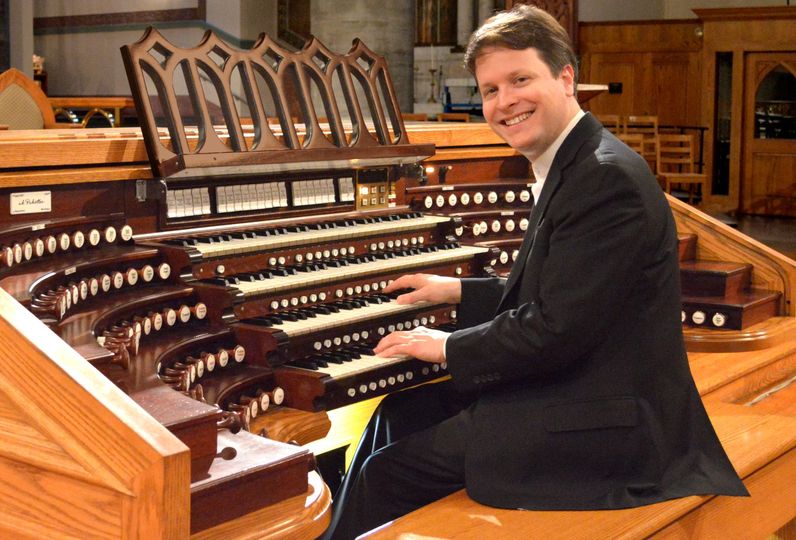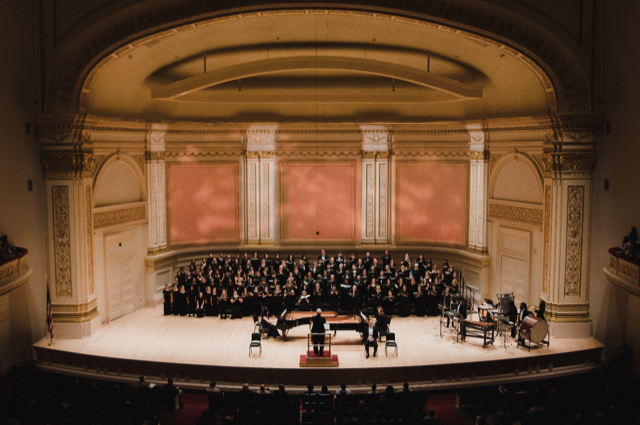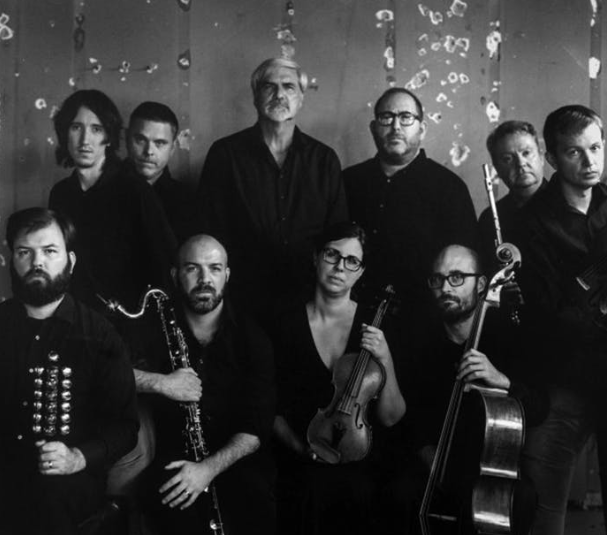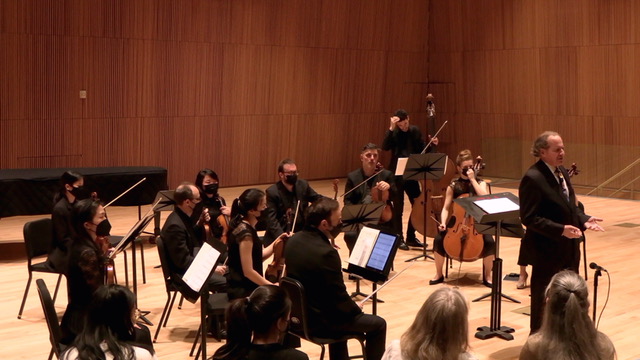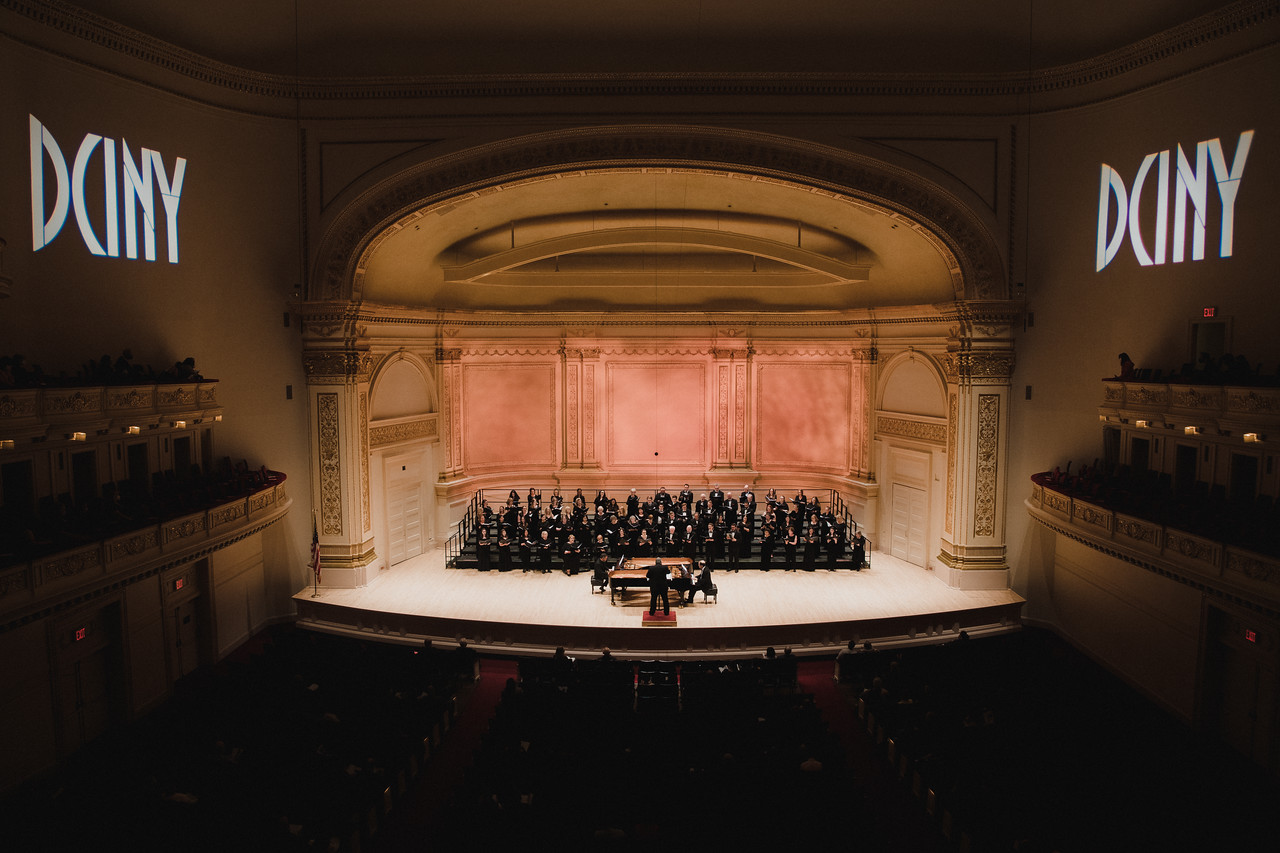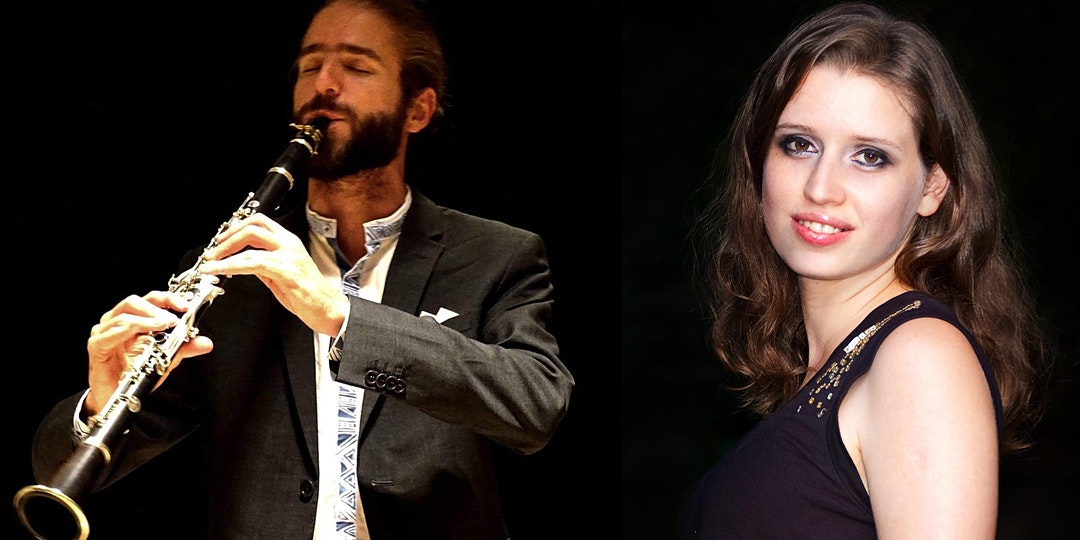Douglas Knehans, composer; Brno Philharmonic Orchestra, Mikel Toms, conductor;
Pavel Wallinger, violin; Judith Weusten, soprano; Katarina Knehans, text
Ablaze Records AR-00062
A stunning new recording of orchestral music by Douglas Knehans (b. 1957) found its way to me this weekend, and one can safely say that I will be rehearing it (and other works) by this extraordinary composer. Quite a lot of music finds its way to my desk (frankly, much of it not so memorable), so perhaps amid the clutter and noise one may be forgiven for never having heard anything by Mr. Knehans until now, despite his formidable credentials. Those credentials include flurries of performances by prominent ensembles and artists (Opera Australia, Melbourne Symphony, Susan Narucki, James Tocco, Awadaggin Pratt, and Gareth Davies, to name a few) and extravagant praise from the press (Audiophile, BBC Magazine, and The New Yorker), plus a profusion of awards and academic distinctions too many to name here. His educational credentials (Australian National University, Queens College – CUNY, and Yale University), have included scholarship studies with noted composer/teachers Thea Musgrave, Lukas Foss, and Jacob Druckman. To learn more about Mr. Knehans, one can visit his website www.douglasknehans.com. Meanwhile, a fitting introduction exists right on his home page, on which he states: “I just want to write music that touches people, that is immediate, that is powerful, colorful and dramatic.” Mr. Knehans, you are succeeding at precisely that.
On to the recording at hand, the word “powerful” is apt. Both of the two works included, Mist Waves (2019) and Cloud Ossuary: Symphony No. 4 (2019 – with Donemus publishing site saying 2018), are steeped in the human experience of searching and sorrow, and yet both, through the inspired writing itself, are deeply consolatory. Comparisons in music tend to do a disservice to all, but, for the sake of readers wanting a quick characterization, the noting of kinships can be helpful. Sections of both works remind one of Górecki’s Symphony No. 3 in their sheer spaciousness of harmonic unfolding and the deft handling of dissonance and bleak subject matter. There are hints at times of what resemble postminimalism in the harmonic pacing, but at other times the music seems to hearken back flickeringly to Stravinsky and Bartok (as in the more driven percussiveness in the first movement of Cloud Ossuary). The bottom line, though, is that Mr. Knehans seems to follows his own star and cannot be lumped in with any particular school or movement. What makes his music compelling is the thoroughness and sensitivity with which he develops ideas and emotions of importance to him – and to us all, one imagines.
The opening of this CD, Mist Waves, is a piece for solo violin and strings, with the solo part here played superbly by violinist Pavel Wallinger. Slightly under eight minutes in length, it is arguably the most immediately appealing piece of the release, transporting the listener miraculously to another world through its soaring melodic material over haunting repeated patterns. The composer himself describes it as a “kind of loose chaconne” and continues as follows:
“Mist Waves is really about land-based cloud and how this forms in waves, sometimes thick and predictable and at other times lightening up and revealing more to us. This serves as a metaphor for me of a type of human consciousness and how things are known and unknown to us in mixtures of known and ungraspable.”
It is surprising on first hearing to read that Mist Waves was originally conceived as a piano-violin work, because its pacing seems to cry out for instruments of a more sustained nature, such as the strings heard here; clearly much is owed, though, to the violinist of its original piano-violin version, Madeleine Mitchell, who was also the dedicatee. In this orchestrated version, it is hard to imagine it played more exquisitely than Mr. Wallinger does in collaboration with Maestro Mikel Toms and the Brno Philharmonic Orchestra. The balance of timbres is masterful, and the sound places the listener somewhere between the heart of the ensemble and the heavens, undoubtedly thanks in part to the engineering of Jaroslav Zouhar and mixing and mastering of multi-Grammy Award-winning Silas Brown.
The second work (and title work for the CD), is Cloud Ossuary: Symphony No. 4, and it is as harrowing as the title suggests in its three movements of increasing depth, darkness and duration (with the third movement lasting twenty-six minutes). The final movement, entitled Bones and All, is, as the composer states, the “center of gravity” of the work. He writes that he composed it first, having been seized with inspiration after reading the poem of the same name by his daughter, writer Katarina Knehans.
The poem, sung from the viewpoint of one tending to a land of death and grief, is harrowing in its explicit imagery of bones and destruction (“blood-soaked fingers” and “rotting carcass, burned and branded by the world”), but after reaching a cataclysmic frenzy a transformation begins, which – despite the devastation – eventually arrives at the closing line, “We are loved by the sun, bones and all.” It is not exactly a “feel good” ending (as, after around twenty minutes of agony, we hardly trust happiness), but it is, nonetheless, a post-cathartic relief of sorts as the protagonist chooses not to leave this wasteland but to find what the composer describes in his liner notes as “a place of light and love, nurturement and peace.” This work seems especially timely right now, despite the fact that death and tragedy are not a recent invention – it is music of healing.
The singing, by Dutch soprano Judith Weusten, is nothing short of mind-boggling. Each time this reviewer asked herself, “is such writing truly idiomatic for the human voice?” the answer would come, “but Ms. Weusten did it – ask no more.” In stratospheric leaps, piercing wails, and tremulous swooning descents, she showed that she can nail any pitch while traveling to Hades and back emotionally. Her range dynamically is staggering and in need of no manipulation; the one place, in fact, in which a decrescendo seems simply too extreme to be natural (end of the first verse on the word “you”) one wonders whether there wasn’t perhaps some audio manipulation that could have been subtler. Ms. Weusten’s diction is excellent throughout as well, though in the few places where the music is simply too high or melismatic to make out the words exactly, that fact may be merciful. One can always read the text separately and grasp the meaning filtered through the music. Just as the music embodies the pain of a painful text, it also transforms it, just as the protagonist in the poem transforms death and grief.
The rest of the Symphony No. 4 truly seems to exist to serve the above-described final movement, though the first movement, The Ossein Cage is spectacular in its own right. Intended to suggest efforts to escape “an imagined cage of dead bone” as described in the composer’s notes, it employs claves and other percussion to evoke the rattling of the cage, building to a fever pitch. To describe the second movement, Breathe Clouded, Mr. Knehans suggests “a dream in the clouds – the dark clouds of something coming.” He also states that he did not want to overshadow the last movement but to create a “foggy antecedent” – which is just what it does, and quite atmospherically. All in all, for music lovers who are not “faint of heart” but seeking an experience as cathartic as a powerful play or film, this recording is highly recommended.
Kudos to all involved in this exciting release.


